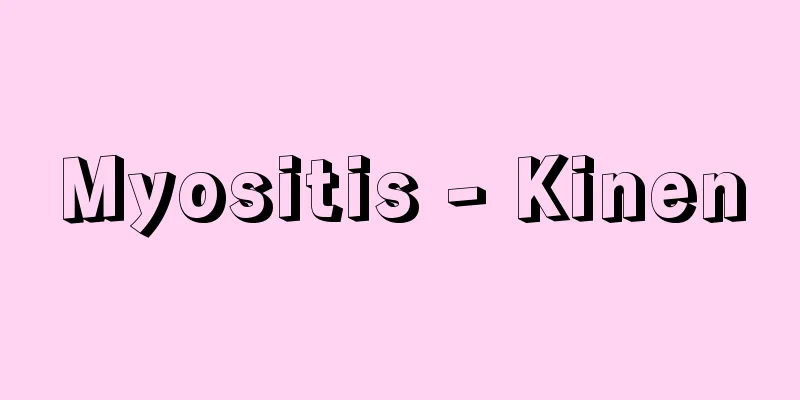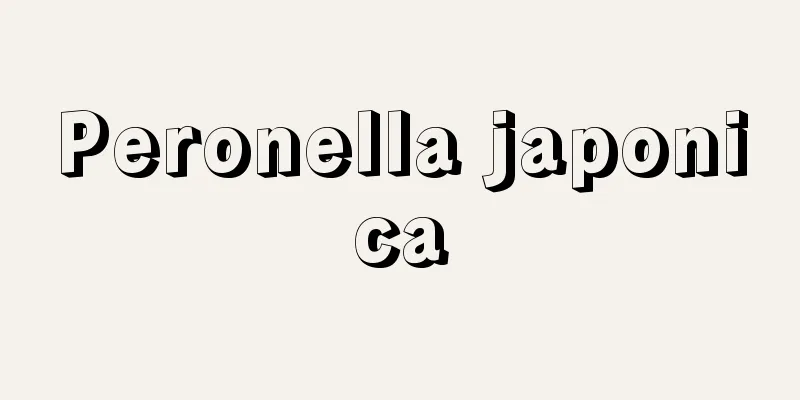Machine elements

|
The smallest functional unit that makes up a machine, also known as an element. Many mechanical elements are incorporated into complex machines, and many of these are internationally standardized and become industrial standards in each country. [Shimizu Shinji] Fastening partsThese include screws, keys, cotters, pins, rivets, etc. that connect machine parts. Although they are small as machine parts, they are important. Depending on the shape of the thread, there are triangular threads, square threads, trapezoidal threads, buttress threads, round threads, etc. Screws with a cross-shaped groove on the head are called cross-recessed threads. Bolts and nuts are widely used as threaded parts for fastening. Bolt heads are usually hexagonal, but they can also be square, round, countersunk, cylindrical, etc. Keys are used to secure gears, belt pulleys, etc. to rotating shafts to transmit power. Depending on their shape, there are blind keys, flat keys, parallel keys, etc. For the same purpose, there is also a mechanical element called a spline shaft, which has key-shaped protrusions at equal intervals on the outer circumference of a shaft and transmits power by fitting these protrusions into grooves in the boss of a gear, etc. This is used for shafts that transmit greater forces than keys. A key is embedded along the length of the shaft, while a cotter is inserted perpendicular to the length of the shaft to join two shafts. Pins are used where not much force is required. When fastened with threaded parts or keys, they can be removed if necessary, but rivets are used for permanent fastening. They are widely used in steel structures, boilers, etc. In this method, holes are drilled in overlapping metal plates, the rivet is inserted, and the head is created by hitting it with a riveting hammer to fasten them. [Hidetaro Nakayama and Shinji Shimizu] Support partsThese include shafts and bearings. Shafts include axles that are primarily subjected to bending, transmission shafts that are subjected to twisting, and shafts that are subjected to bending, twisting, tension, compression, and more. The parts that support these shafts are called bearings. There are radial bearings that receive loads perpendicular to the shaft, and thrust bearings that receive loads in the axial direction. Bearings can be divided into plain bearings, in which the shaft and bearing surfaces come into direct contact and slide, and rolling bearings, in which rollers or balls are placed between the inner and outer rings of the bearing to reduce friction between the shaft and the shaft support. In plain bearings, a thin oil film is created between the contact surfaces using grease, mineral oil, etc. to prevent the shaft and bearing from coming into direct contact. This is called lubrication. Rolling bearings include ball bearings with balls inside (ball bearings) and roller bearings with rollers inside (roller bearings). Rolling bearings also come in radial and thrust types. [Hidetaro Nakayama and Shinji Shimizu] Power transmission partsExamples include links used in lever crank mechanisms and slider crank mechanisms, cams that transmit complex movements in automatic machines, gears that reliably transmit rotation, and shaft couplings that transmit the power of one shaft to another. Linkages that combine links are used in many machines. There are many types of gears, including spur gears, bevel gears, helical gears, and worms. Planetary gear devices are used in automobiles and play an important role in power transmission. Belts, ropes, and chains are also used to transmit power. There are two types of shaft couplings: those that connect two shafts constantly, and clutches that connect and disconnect them. Sleeve couplings, flange couplings, flexible couplings, and universal joints are examples of the former, while dog clutches, friction clutches, and fluid clutches are examples of the latter. [Hidetaro Nakayama] othersIn addition to brakes that adjust or stop the movement of machines, flywheels that store kinetic energy and release it at the appropriate time, pipes for transporting fluids and the pipe joints that connect them, valves that adjust or stop the flow of fluids, and packings that prevent fluid leakage, there are also springs that use the elasticity of metal to prevent shocks, etc. Springs include laminated leaf springs, coil springs, etc. There are also air springs that seal in air. [Hidetaro Nakayama] [Reference items] | | | | | | | | | | | Packing | | | | | | | |©Shogakukan "> Main types of keys ©Shogakukan "> Cotter ©Shogakukan "> Spline shaft ©Shogakukan "> Main types of screws ©Takashi Aoki Main types of nuts ©Takashi Aoki Main types of bolts (classified by head shape) ©Takashi Aoki Main types of rivets and their part names ©Makoto Takahashi Plain bearings (thrust and radial bearings) ©Makoto Takahashi Main types of rolling bearings ©Shogakukan "> Main types of cams (flat cams) ©Shogakukan "> Main types of cams (3D cams) ©Takashi Aoki Main types of gears ©Shogakukan "> Main types of shaft couplings ©Shogakukan "> Clutch type ©Shogakukan "> Main types of pipe fittings (threaded gas pipe fittings… ©Takashi Aoki Main types of springs (metallic) Source: Shogakukan Encyclopedia Nipponica About Encyclopedia Nipponica Information | Legend |
|
機械を構成している最小単位の機能部品で、略して機素ともいう。複雑な機械にも多くの機械要素が組み込まれており、これらは、国際的にも標準化され、各国の工業規格になっているものが多い。 [清水伸二] 締付け用部品機械の部品を結合するねじ、キー、コッター、ピン、リベットなどである。機械部品としては小さいが重要なものである。ねじには、ねじ山の形によって三角ねじ、角ねじ、台形ねじ、のこ歯ねじ、丸ねじなどがある。ねじの頭に十字形の溝をつけたものは、十字穴付きねじとよばれている。ねじを切った部品として、ボルト、ナットが締付け用として広く使用されている。ボルトの頭部は六角形が普通であるが、四角形、丸形、皿形、円筒形などもある。 キーは歯車、ベルト車などを回転軸に固定し、動力を伝達させるときに用いられる。その形状により、くらキー、平キー、平行キーなどがある。また、同様の目的として、キー状の突起を軸の外周に等間隔に設け、歯車などのボス部に設けた溝にこの突起をはめ合わせて、動力伝達を行う、スプライン軸という機械要素もある。これは、キーより大きな力を伝える軸に使用される。 キーは軸の長手方向に沿って埋め込まれるが、軸の長手方向に直角に差し込んで2軸を接合するのがコッターである。あまり大きな力のかからないところに使用されるのがピンである。ねじ部品やキーなどで固定した場合には、必要があれば取り外すことができるが、永久的に締結するものにリベットがある。鉄骨構造物、ボイラーなどに広く使用されている。重ね合わせた金属板に穴をあけ、リベットを差し込み、リベットハンマーでたたいて頭をつくり締結する方法である。 [中山秀太郎・清水伸二] 支持部品軸、軸受などである。軸には主として曲げ作用を受ける車軸、捩(ねじ)り作用を受ける伝動軸、曲げ、捩り、引っ張り、圧縮などを同時に受ける軸などがある。これらの軸を支える部品を軸受という。軸に対して直角方向の荷重を受けるラジアル軸受と、軸方向に荷重を受けるスラスト軸受とがある。軸受はその構造上から、軸と軸受の面が直接接触してすべり運動をするすべり軸受と、軸受の内輪と外輪の間にころや玉をいれて、軸と軸支持部との摩擦を軽減した、ころがり軸受とに分けることができる。すべり軸受ではグリース、鉱物油などによって、接触面間に薄い油膜をつくって、軸と軸受が直接接触しないようにする。これを潤滑という。ころがり軸受は、球を入れた玉軸受(ボールベアリング)と、ころを入れたころ軸受(ローラーベアリング)とがある。ころがり軸受にもラジアル形とスラスト形とがある。 [中山秀太郎・清水伸二] 動力伝達部品てこクランク機構、スライダー・クランク機構などに使用されるリンク、自動機械などの複雑な運動を伝えるカム、回転を確実に伝える歯車、一方の軸の動力を他方の軸に伝達する軸継手などがある。リンクを組み合わせたリンク装置は機械に数多く使用されている。歯車には平歯車、傘(かさ)歯車、はすば歯車、ウォームなど種類は多い。遊星歯車装置は自動車などに使われ、動力伝達に重要な役割を果たしている。そのほかベルト、ロープ、鎖なども動力の伝達に使われる。軸継手には2軸を常時連結しているものと、連結したり切り離したりするクラッチとがある。スリーブ継手、フランジ継手、たわみ継手、自在継手などは前者で、かみ合いクラッチ、摩擦クラッチ、流体クラッチなどは後者である。 [中山秀太郎] その他機械の運動を調節したり停止させたりするブレーキ、運動のエネルギーをためておいて適時エネルギーを放出するフライホイール、流体を送るための管やそれを連結する管(くだ)継手、流体の流れを調節したり止めたりする弁、流体の漏れを防ぐパッキンのほかに、金属の弾性を利用して衝撃などを防ぐためのばねなどがある。ばねには、重ね板ばね、コイルばねなどがある。また空気を密閉した空気ばねもある。 [中山秀太郎] [参照項目] | | | | | | | | | | | | | | | | | | |©Shogakukan"> キーのおもな種類 ©Shogakukan"> コッター ©Shogakukan"> スプライン軸 ©Shogakukan"> ねじのおもな種類 ©青木 隆"> ナットのおもな種類 ©青木 隆"> ボルトのおもな種類(頭の形状による分類… ©青木 隆"> リベットのおもな種類と各部名称 ©高橋 真"> 平軸受(スラスト軸受とラジアル軸受) ©高橋 真"> ころがり軸受のおもな種類 ©Shogakukan"> カムのおもな種類(平面カム) ©Shogakukan"> カムのおもな種類(立体カム) ©青木 隆"> 歯車のおもな種類 ©Shogakukan"> 軸継手のおもな種類 ©Shogakukan"> クラッチの種類 ©Shogakukan"> 管継手のおもな種類(ねじ込みガス管継手… ©青木 隆"> ばねのおもな種類(金属製) 出典 小学館 日本大百科全書(ニッポニカ)日本大百科全書(ニッポニカ)について 情報 | 凡例 |
Recommend
pride-of-India
…It is also often planted as a garden tree or roa...
Okiura Dam
Okiura Dam was built in 1944 on the Asaseishikawa ...
Suvorovskoe uchilishche (English spelling)
… In the 18th and 19th centuries, European countr...
Innate Releasing Mechanism
Sometimes abbreviated as IRM. It is considered the...
Cyanoethylation - Cyanoethyl Ca
A reaction to introduce the cyanoethyl group CNCH ...
Mount Kamiho - Kabuyama
(Takatsuki City, Osaka Prefecture) A tourist attra...
Rishiri [town] - Rishiri
A town in northern Hokkaido, Rishiri District, occ...
Guillaume Dupuytren
1777‐1835 French surgeon. Born in Pierre-Buffières...
Movement Attack - Idoukougeki
In volleyball, an attacking technique in which the...
Semantic analysis
Object program generation process In programming l...
Worcester porcelain
This soft-paste porcelain has been produced since ...
Hosta tardiva (English spelling)
… [Noboru Fujita]. … *Some of the terminology tha...
Patriotic Labor Party
…In 1926, during a strike at Hamamatsu Nippon Gak...
Sick sinus syndrome
What is the disease? Sick sinus syndrome is mainl...
Agha Muhammad Yahya Khan
...However, after the defeat in the second India-...









